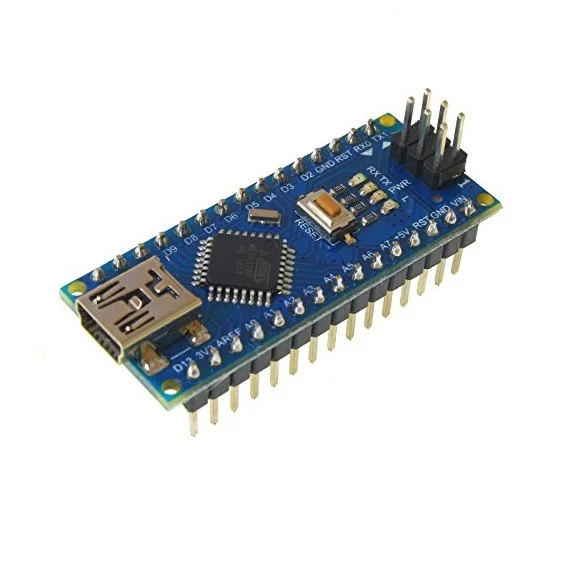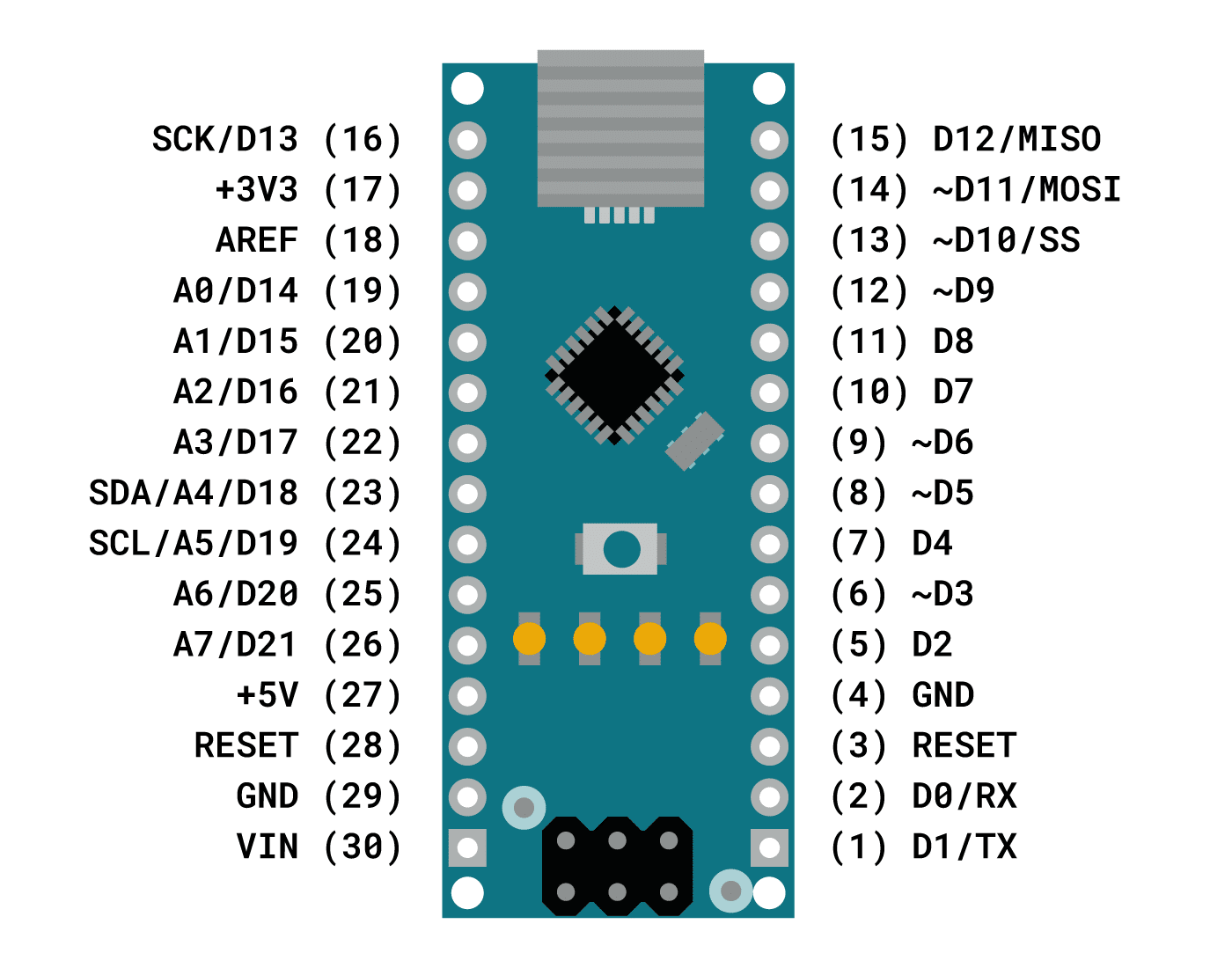Arduino Nano
The Arduino Nano is a small, complete, and breadboard-friendly board based on the ATmega328 (Arduino Nano 3.x). It has more or less the same functionality of the Arduino Duemilanove, but in a different package. It lacks only a DC power jack, and works with a Mini-B USB cable instead of a standard one.
| Microcontroller | ATmega328 |
| Architecture | AVR |
| Operating Voltage | 5 V |
| Flash Memory | 32 KB of which 2 KB used by bootloader |
| SRAM | 2 KB |
| Clock Speed | 16 MHz |
| Analog I/O Pins | 8 |
| EEPROM | 1 KB |
| DC Current per I/O Pins | 40 mA (I/O Pins) |
| Input Voltage | 7-12 V |
| Digital I/O Pins | 22 |
| PWM Output | 6 |
| Power Consumption | 19 mA |
| PCB Size | 18 x 45 mm |
| Weight | 7 g |
Original price was: ₹ 499.₹ 299Current price is: ₹ 299.
40% Off
product description
Arduino NANO:-
Arduino NANO is the open source smallest Embedded Development board launched by Arduino based on Atmega328 SMD Package Microcontroller. It is a Surface mount Breadboard Friendly board integrated with Mini USB Port. DC Power Jack is not available on this Board, so power can be given through Mini USB Cable. It automatically sense and switch to the higher potential source of power, there is no need for the power select jumper.
Serial Communication Pins
Pins – 1, 2 1 – RX and 2 – TX
These two pins RX- receive and TX- transmit are used for TTL serial data communication. The pins RX and TX are connected to the corresponding pins of the USB-to-TTL Serial chip.
PWM Pins
Pins – 6, 8, 9, 12, 13, and 14
Each of these digital pins provide a Pulse Width Modulation signal of 8-bit resolution. The PWM signal can be generated using analogWrite () function.
Arduino Nano ICSP
ICSP stands for In Circuit Serial Programming, which represents one of the several methods available for programming Arduino boards. Ordinarily, an Arduino bootloader program is used to program an Arduino board, but if the bootloader is missing or damaged, ICSP can be used instead. ICSP can be used to restore a missing or damaged bootloader.
Each ICSP pin usually is cross-connected to another Arduino pin with the same name or function. For example, MISO on Nano’s ICSP header is connected to MISO / digital pin 12 (Pin 15); MOSI on the ISCP header is connected to MOSI / digital pin 11 (Pin 16); and so forth. Note, MISO, MOSI, and SCK pins taken together make up most of an SPI interface.
We can use one Arduino to program another Arduino using this ICSP.
SPI Pins
Pins - 13, 14, 15, and 16
When you don’t want the data to be transmitted asynchronously you can use these Serial Peripheral Interface pins. These pins support synchronous communication with SCK as the synchronizing clock. Even though the hardware has this feature, the Arduino software doesn’t have this by default. So you have to include a library called SPI Library for using this feature
additional information
| Weight | .25 kg |
|---|---|
| Dimensions | 12 × 12 × 6 cm |



Reviews
There are no reviews yet.